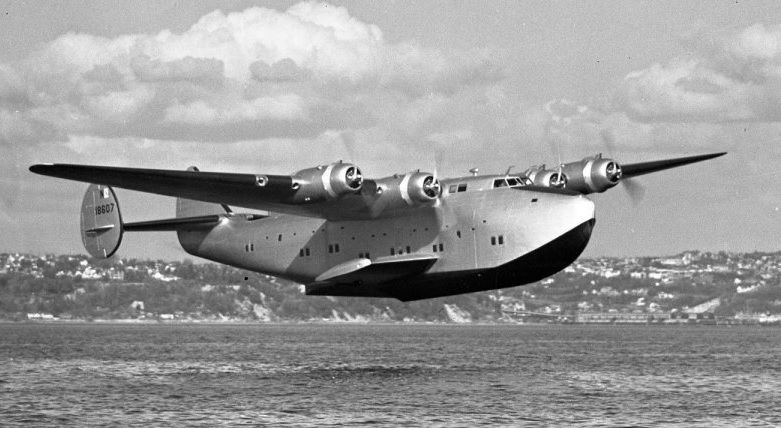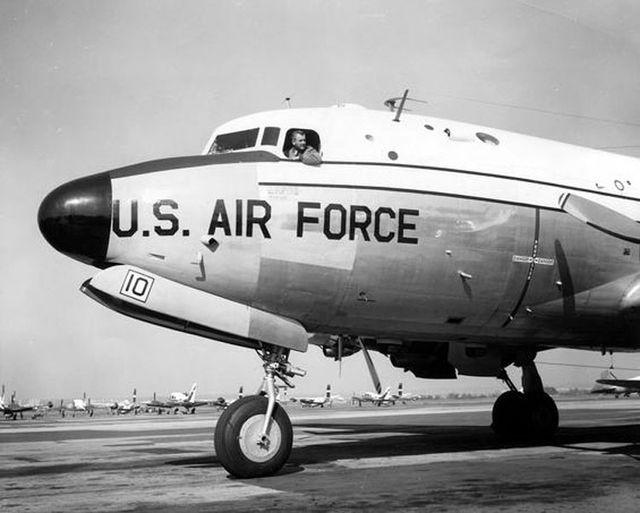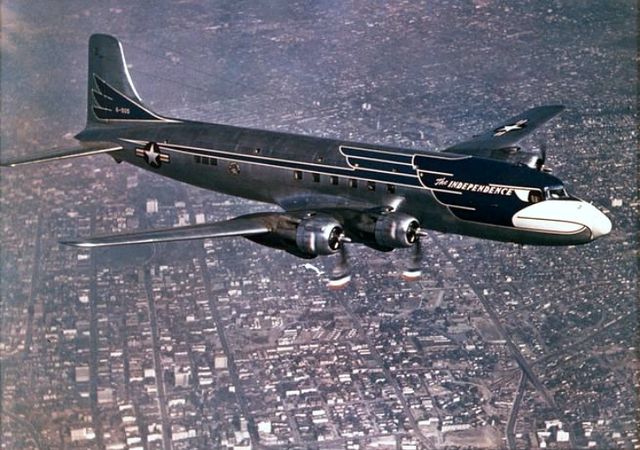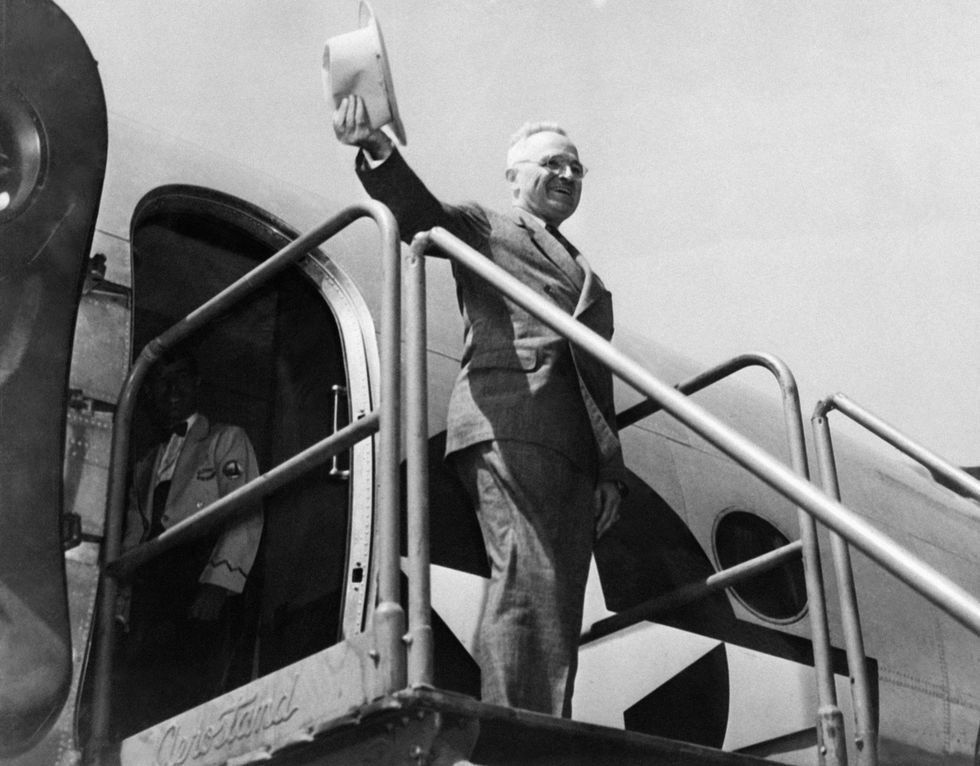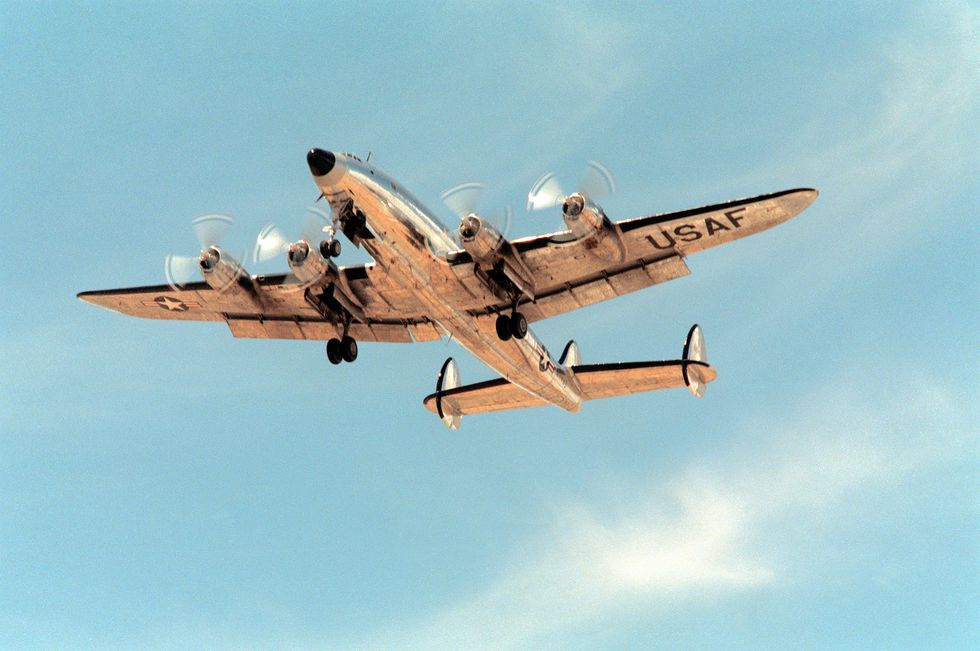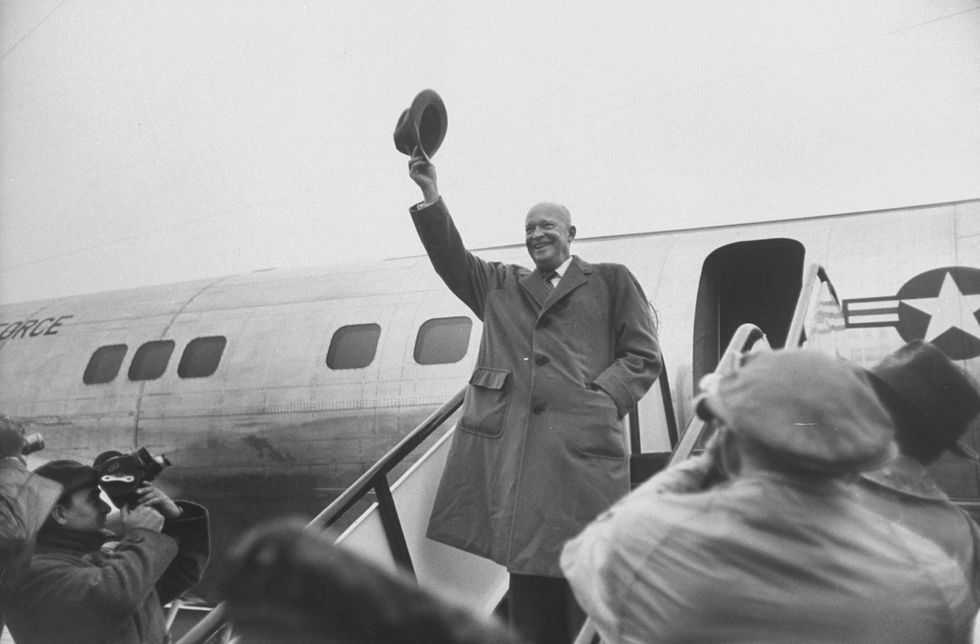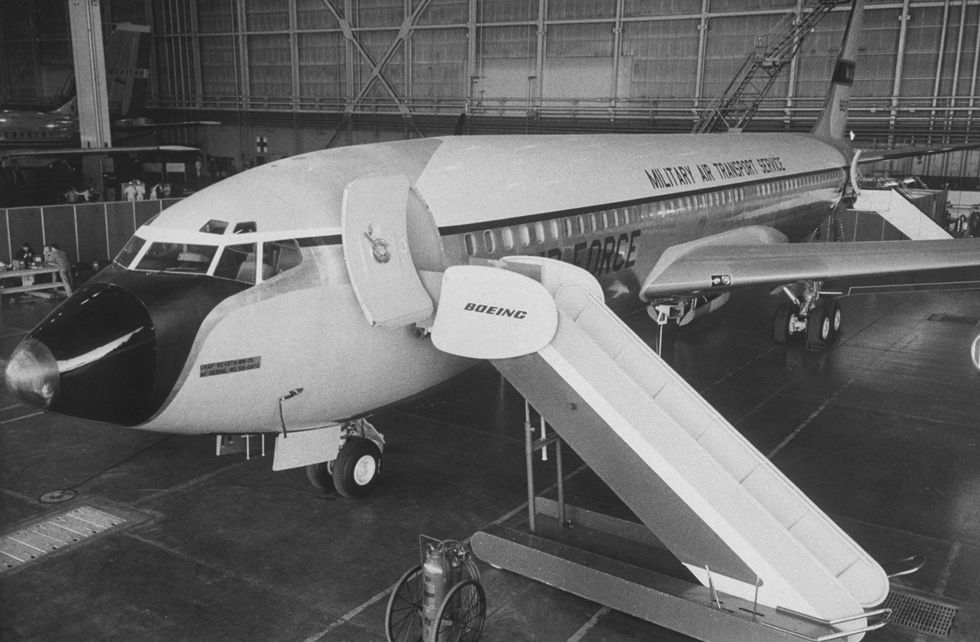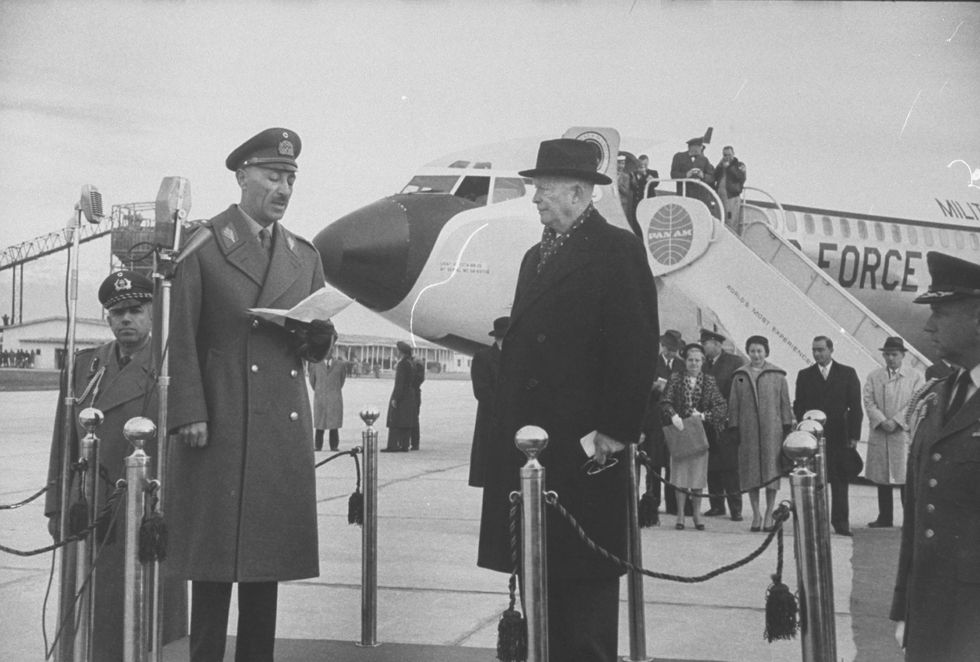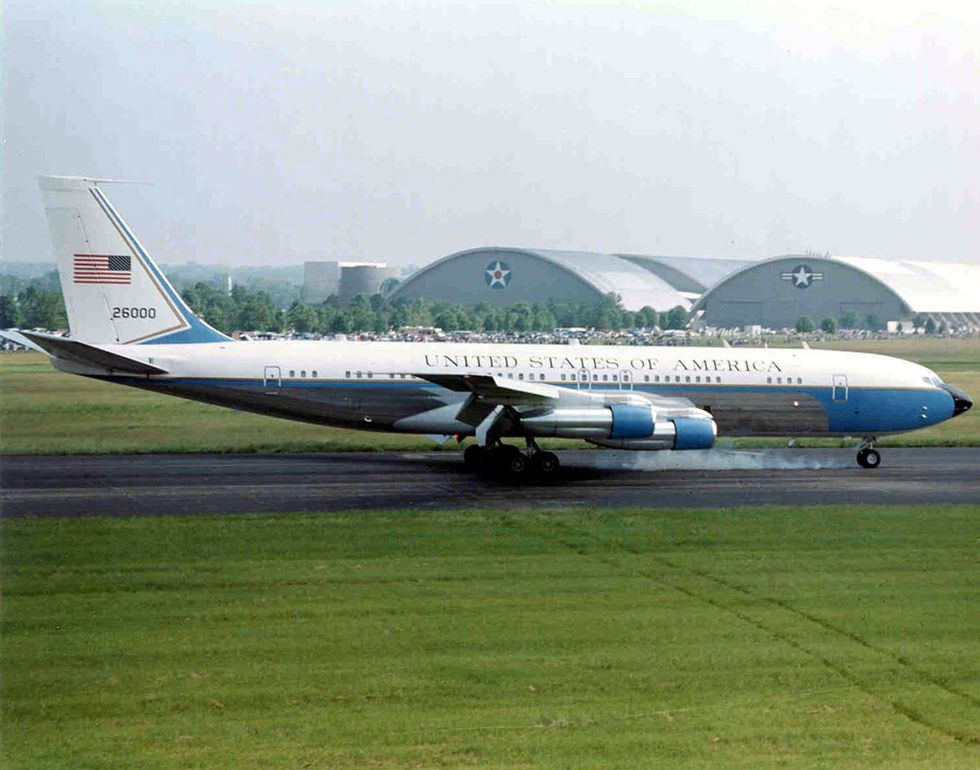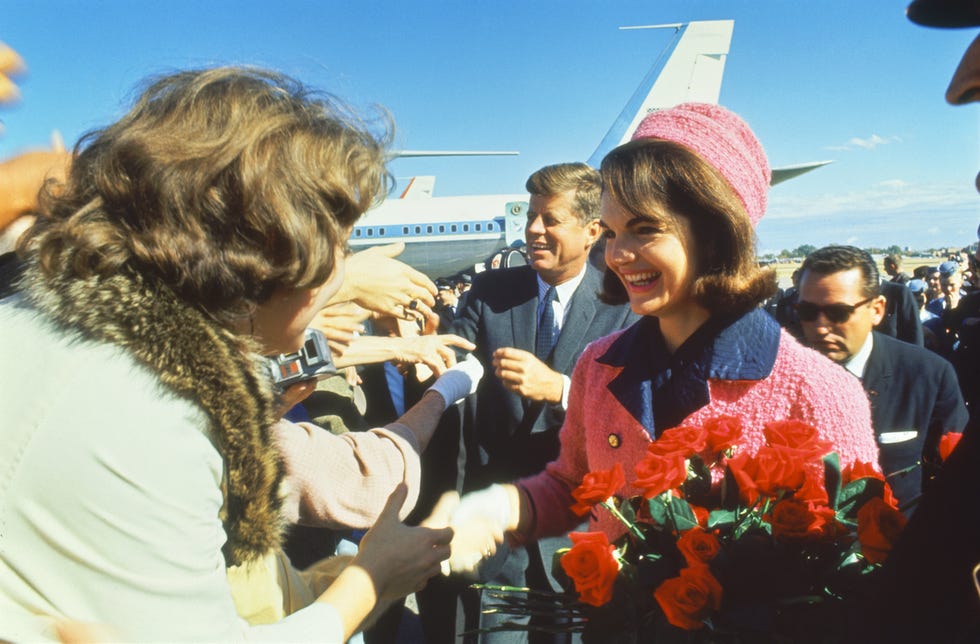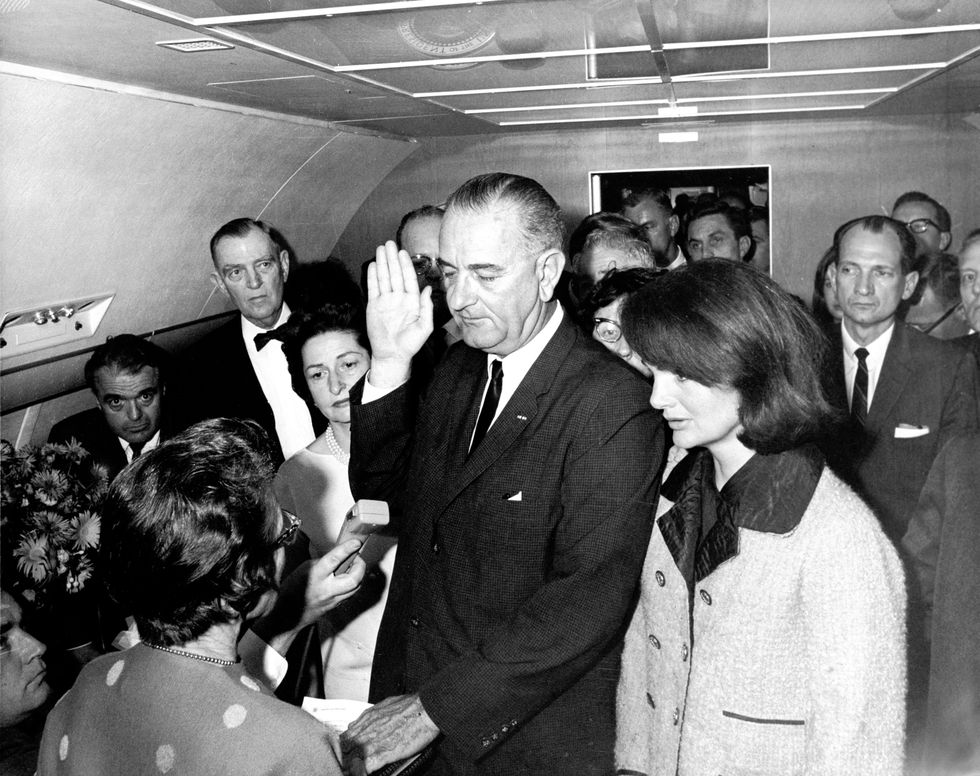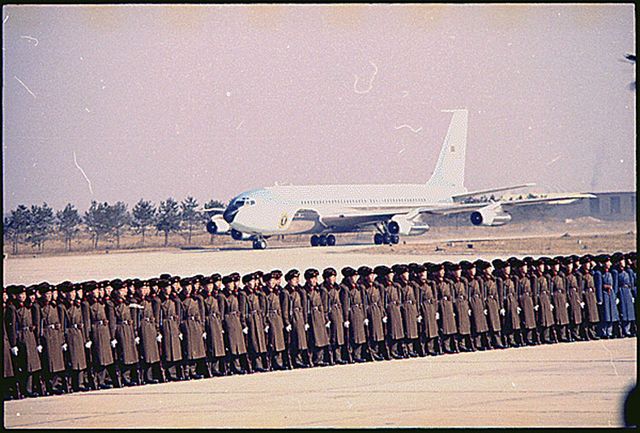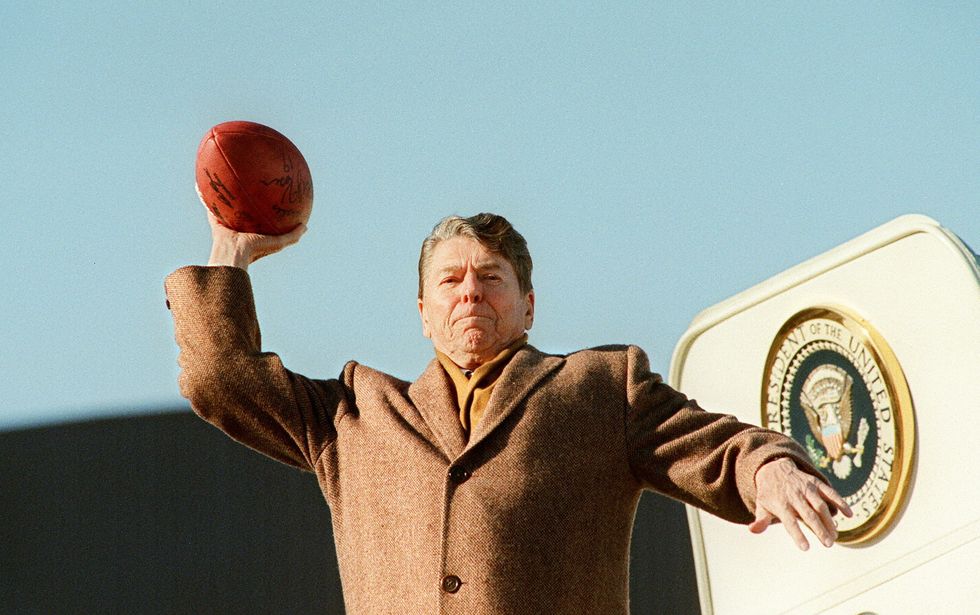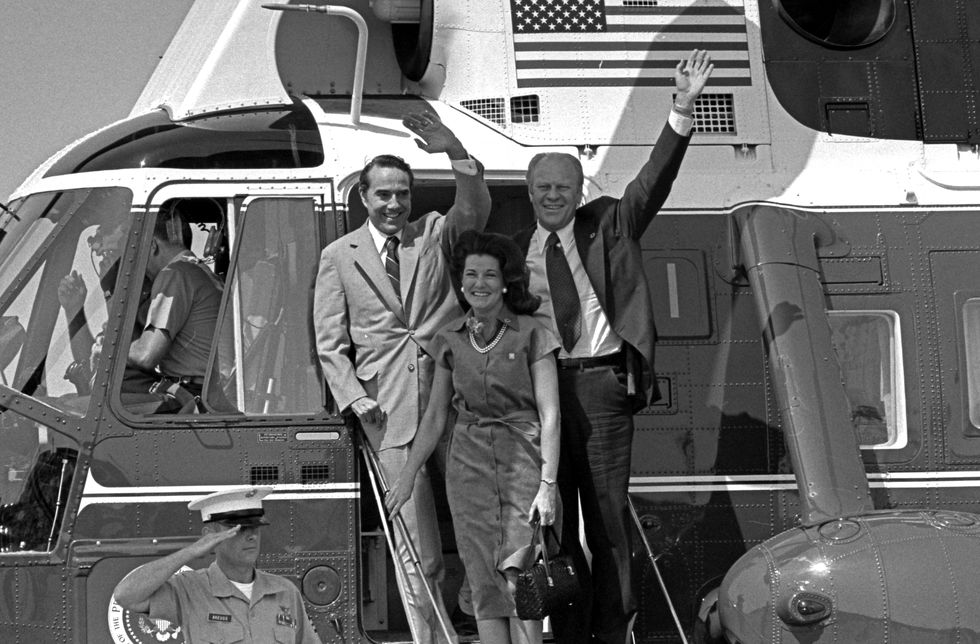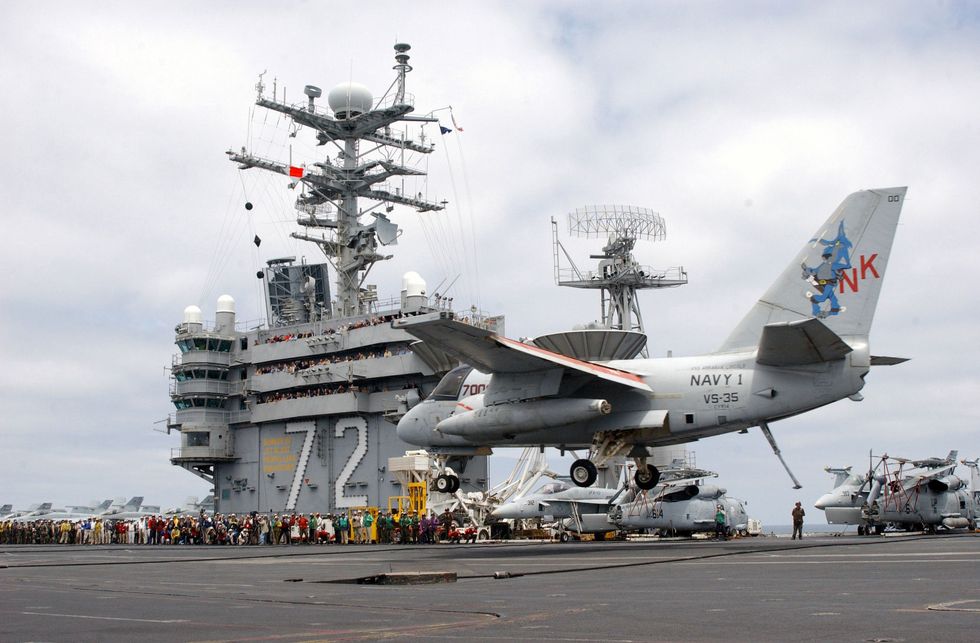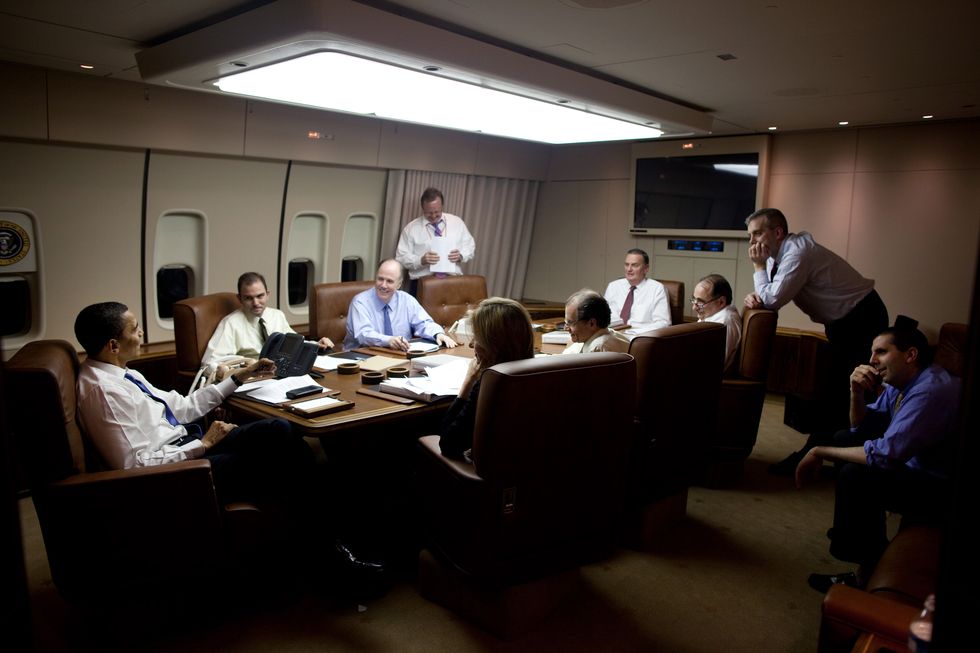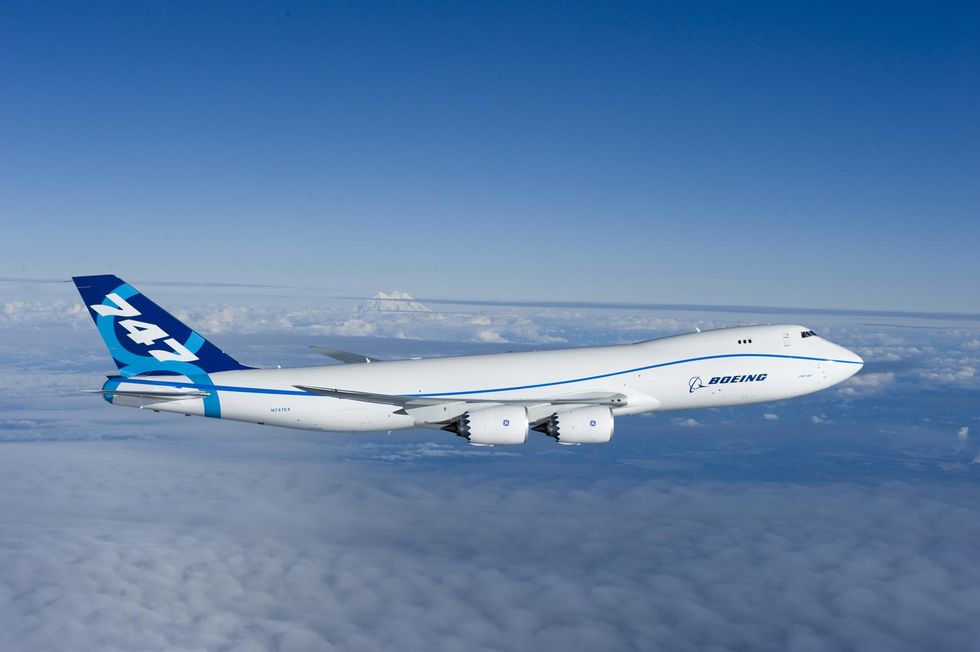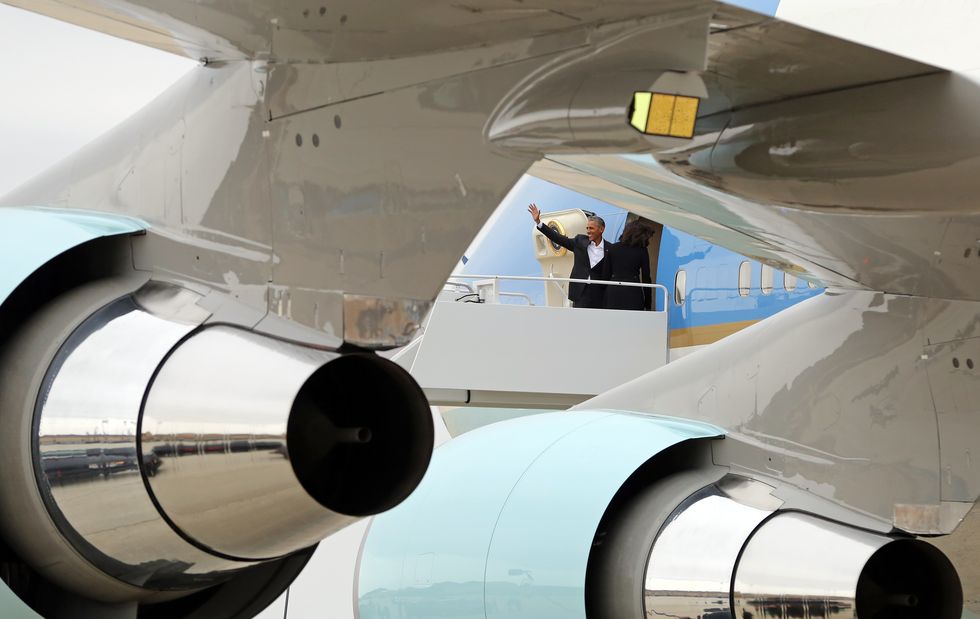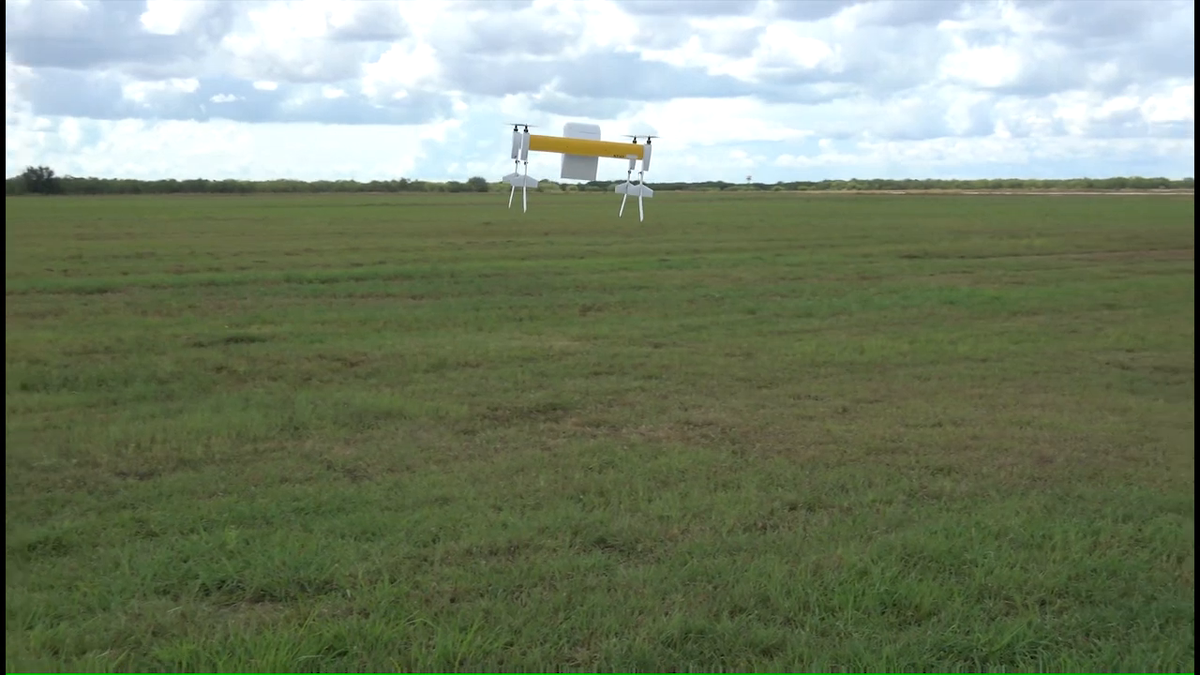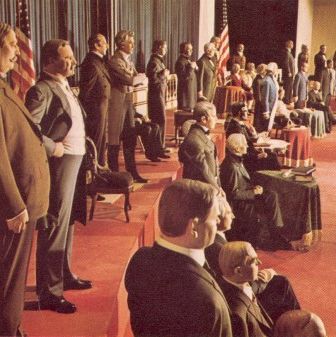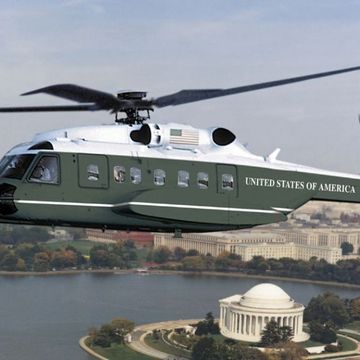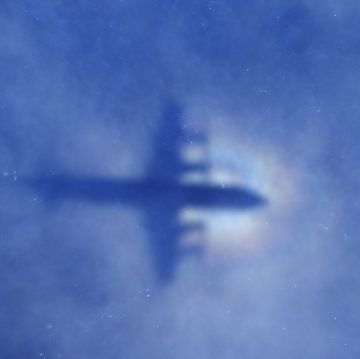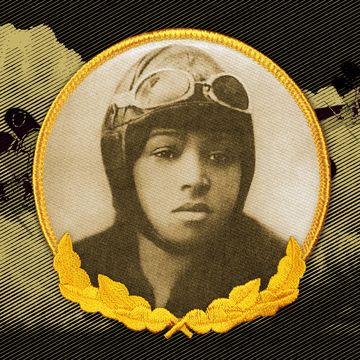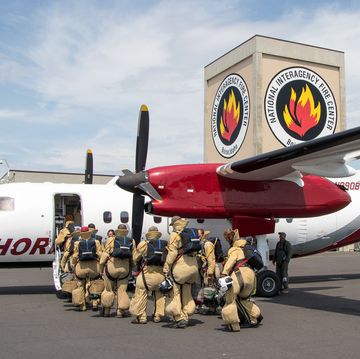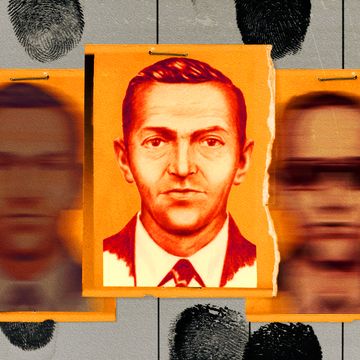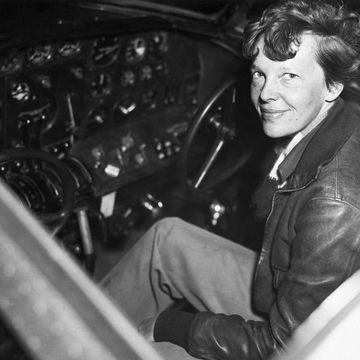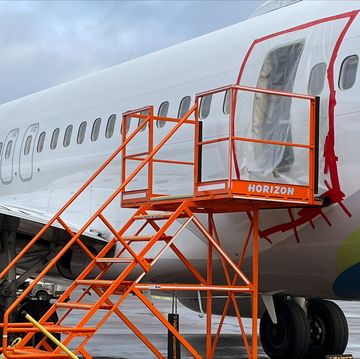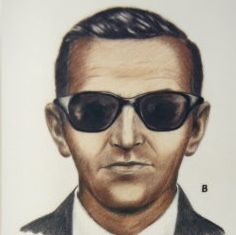Air Force One isn't a specific plane, it's the air traffic control designation given to any Air Force aircraft with the President of the United States on board. The designation was first used when an Eastern Airlines commercial flight entered the same airspace as a plane carrying President Eisenhower, and both planes had the same call sign. Air Force One has been the designation for the president ever since, but the history of presidents on planes goes back a lot further than that.
First Flight
Theodore Roosevelt (who else?) was the first president to fly in an aircraft. Or ex-president, rather. Roosevelt had already left office by the time he took to the skies in this Wright Flier—the very first heavier-than-air powered aircraft—on October 11, 1910. Archibald Hoxsey, who worked for the Wright brothers, had the honor of piloting the former president.
The President Needs a Plane
The Douglas Dolphin was the first aircraft specifically designated as a transport for the president. One of these amphibious planes was modified for President Franklin D. Roosevelt and designated RD-2 by the U.S. Navy. It remained at the ready from 1933 to 1939, though there is no evidence FDR actually flew in the plane.
FDR Goes to Europe
Still, Franklin Delano Roosevelt was the first sitting president to fly. In 1943, a Boeing 314 Clipper flying boat named the Dixie Clipper carried him 5,500 miles in three legs to attend the Casablanca Conference where he met with Winston Churchill and Charles de Gaulle to discuss the next phase of World War II.
Air travel was the preferred method of transatlantic transportation due to the ongoing threat of German submarines during the Battle of the Atlantic. It was at the Casablanca Conference that the Allies declared they would accept nothing less than the unconditional surrender of the Axis powers.
The Sacred Cow
Toward the end of the War, the Secret Service outfitted a C-54 Skymaster for transporting the ailing FDR. Nicknamed the Sacred Cow, the C-54 had a radio telephone, a sleeping area, and even a retractable lift to hoist Roosevelt and his wheelchair into the plane. President Roosevelt flew on the modified aircraft only once before his death. The Sacred Cow transported him to the Yalta Conference in February 1945.
The Independence
Harry S. Truman flew aboard the Sacred Cow after Roosevelt's death in April 1945—he was on the plane when he signed the National Security Act of 1947, which established the office of Secretary of Defense and created the U.S. Air Force as a distinct branch of the military (it was formerly the U.S. Army Air Forces).
Later that year, Truman replaced the Sacred Cow with a C-118 Liftmaster he named Independence after his hometown in Missouri. This was the first presidential transport aircraft with a unique exterior—the nose of the aircraft was painted with a bald eagle's head.
Air Force One
In 1953, Eastern Airlines commercial flight 8610 flew into the same airspace as a plane carrying President Dwight D. Eisenhower with the call sign Air Force 8610. To avoid future confusion, the Air Force established the unique air traffic control designation "Air Force One" for any aircraft carrying the President of the United States.
President Eisenhower introduced four propeller-driven aircraft to serve as presidential transports: two Lockheed C-121 Constellations nicknamed Columbine II and III, and two Aero Commander aircraft, the smallest planes to ever serve as Air Force One. The first official flight of Air Force One carried President Eisenhower in 1959.
The First Presidential Jet
Toward the end of the Eisenhower Administration, the Air Force decided that prop planes were just not going to cut it for the president anymore. Air Force One would henceforth be a jet aircraft. SAM (Special Air Missions) 970, a Boeing 707, replaced President Eisenhower's C-121 Constellations in 1959. SAM 971 and 972 were added to the fleet shortly after.
A Boeing 707-120 with modified interior and communications equipment, called VC-137, took Eisenhower on his 22,000-mile "Flight to Peace" goodwill tour when he visited 11 Asian nations over the course of 19 days in December 1959. The jet made the trip in half the time that the Columbine aircraft would have.
SAM 26000 and 27000
John F. Kennedy traveled in SAM 970, 971 and 972 on multiple occasions, but in October 1962, the U.S. Air Force purchased a long-range 707, the Boeing C-137 Stratoliner, to become the new presidential transport aircraft: SAM 26000. President Kennedy famously had the red and gold livery of the plane changed because he thought it looked too regal. The plane used a more modest polished aluminum design with blue and white instead, and aircraft designated for presidential use have mimicked the look ever since.
The most famous moment aboard SAM 26000 was Lyndon B. Johnson taking the oath of office after the assassination of President Kennedy, an event captured in this iconic photo.
President Johnson used the plane for a trip to South Vietnam during the war, and President Nixon flew on SAM 26000 during his historic trip to China in 1972—the first time a U.S. president ever visited the People's Republic. SAM 26000 stayed in service until the Clinton administration, though the plane was replaced as the primary presidential aircraft by another VC-137, SAM 27000, in 1972 during the Nixon administration.
In 1974, when Air Force One was flying President Nixon into Syria, two Syrian MiG fighter jets flew up to act as escorts. However, no one informed the pilot of Air Force One, and he immediately took evasive maneuvers including a dive that sent staffers on the aircraft sprawling. The U.S. Air Force alerted the pilot of Air Force One that the MiGs were escorts and not hostile interceptors shortly after the encounter.
Nixon boarded SAM 27000 shortly after resigning the presidency. The pilot of the aircraft at the time, Colonel Ralph Albertazzie, was forced to contact air traffic control to report that the call sign for the plane had changed from Air Force One to SAM 27000, as Gerald Ford was sworn in as president with Nixon still in flight. According to the New York Times, Albertazzie radioed in while flying over Jefferson County, Missouri: "Kansas City, this was Air Force One. Will you change our call sign to SAM 27000?" Air traffic control responded: "Roger, SAM 27000. Good luck to the president."
SAM 27000 flew every subsequent President of the United States except for Barack Obama. On August 29, 2001, it flew George W. Bush from San Antonio to Waco, Texas, for its final flight.
Executive One, Marine One, Army One and Navy One
The aircraft carrying the United States President isn't always referred to as Air Force One—specifically when it is not an aircraft operated by the Air Force. President Nixon is the only president to have flown on Executive One, the designation for a regularly scheduled civilian flight that has a sitting president on board. Nixon and his family flew on a United Airlines DC-10 from Washington Dulles International Airport to Los Angeles International Airport in December 1973 to "set an example for the rest of the nation during the current energy crisis," according to the administration.
Other branches of the armed forces get to transport the president from time to time as well. Helicopters operated by the U.S. Marine Corps receive the designation Marine One when they carry the POTUS. The Army assisted with helicopter transport for the president prior to 1976, using the rarely seen designation Army One. A Bell UH-13J Sioux was the first helicopter used to transport a sitting president when it flew President Eisenhower to his summer home in Pennsylvania in 1957.
The Navy first had the honor of flying the president, and of using the call sign Navy One, in May 2003. An S-3B Viking operated by the "Blue Wolves" of the VS-35 carrier squadron flew President George W. Bush to the aircraft carrier USS Abraham Lincoln off the coast of California, making him the first president to land on an aircraft carrier in a plane, requiring an arrested landing.
In a unique operation carried out in March 2000, President Clinton flew to Pakistan aboard an unmarked Gulfstream III that was not designated Air Force One. A C-17 Globemaster III used the call sign Air Force One, without the president on board, as it flew the same route a few minutes behind the Gulfstream III to act as a decoy.
Boeing 747
The Air Force decided the president needed new planes to replace the aging 707s during the Reagan Administration, though the pair of 747s that replaced SAM 26000 and 27000 were not ready for service until George H. W. Bush took office. Production of the first Boeing 747-200B to serve as Air Force One was delayed so additional work could be done to protect the aircraft from the effects of an electromagnetic pule (EMP), either from a nuclear blast or as a direct attack on the plane's electronics.
The VC-25s—two 747s modified by the military for presidential transport—contain secure telephone and computer communications systems so the president can continue to conduct operations while in flight. The aircraft also have an office for the president, a conference room, and private quarters for the president and the first lady.
Immediately after the attacks of 9/11, George W. Bush boarded SAM 28000 and took off from Sarasota-Bradenton International Airport in Florida. An airliner neared Air Force One shortly after takeoff and ominously failed to respond to air traffic control's attempts to radio the plane (it turns out the plane's transponder was mistakenly switched off). Colonel Mark Tillman, the senior pilot of Air Force One at the time, took no chances and flew his aircraft over the Gulf of Mexico, requesting "fighters on the wing." The airliner did not follow Air Force One.
The two VC-25s remain the primary aircraft for presidential transport to this day.
Air Force One of the Future
The Air Force announced in January 2015 that the Boeing 747-8 will serve as the next presidential aircraft. The new aircraft will have defenses against electromagnetic pulses, in-air refueling capabilities, and likely a sophisticated onboard missile defense system. It could be some time before the aircraft are ready to fly the president however, and the VC-25s, though aging, will likely see plenty more use.

Jay Bennett is the associate editor of PopularMechanics.com. He has also written for Smithsonian, Popular Science and Outside Magazine.



